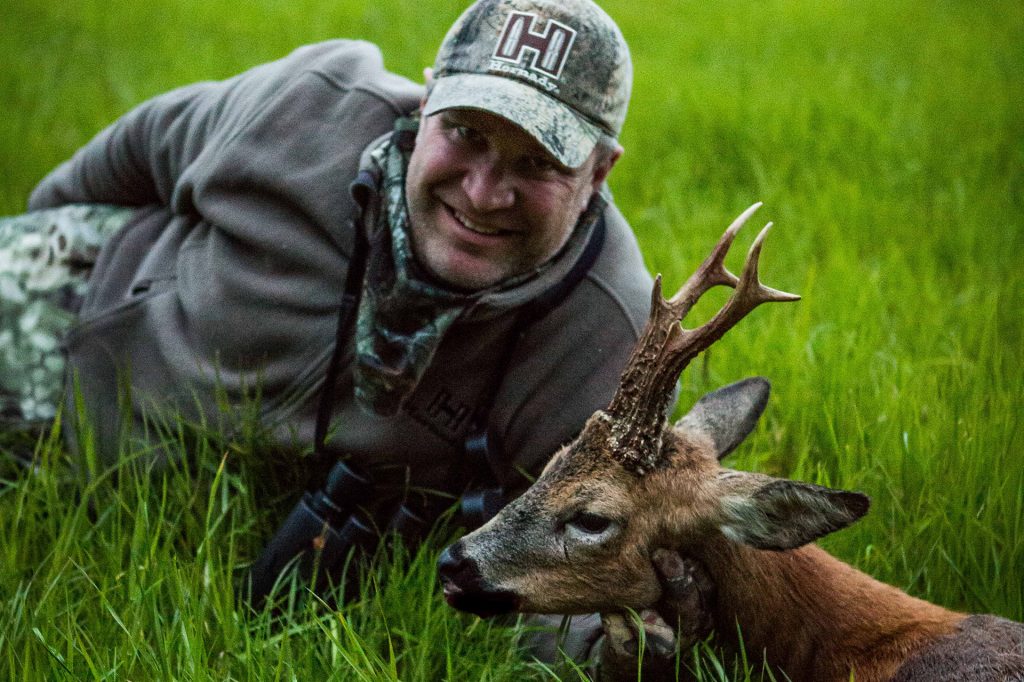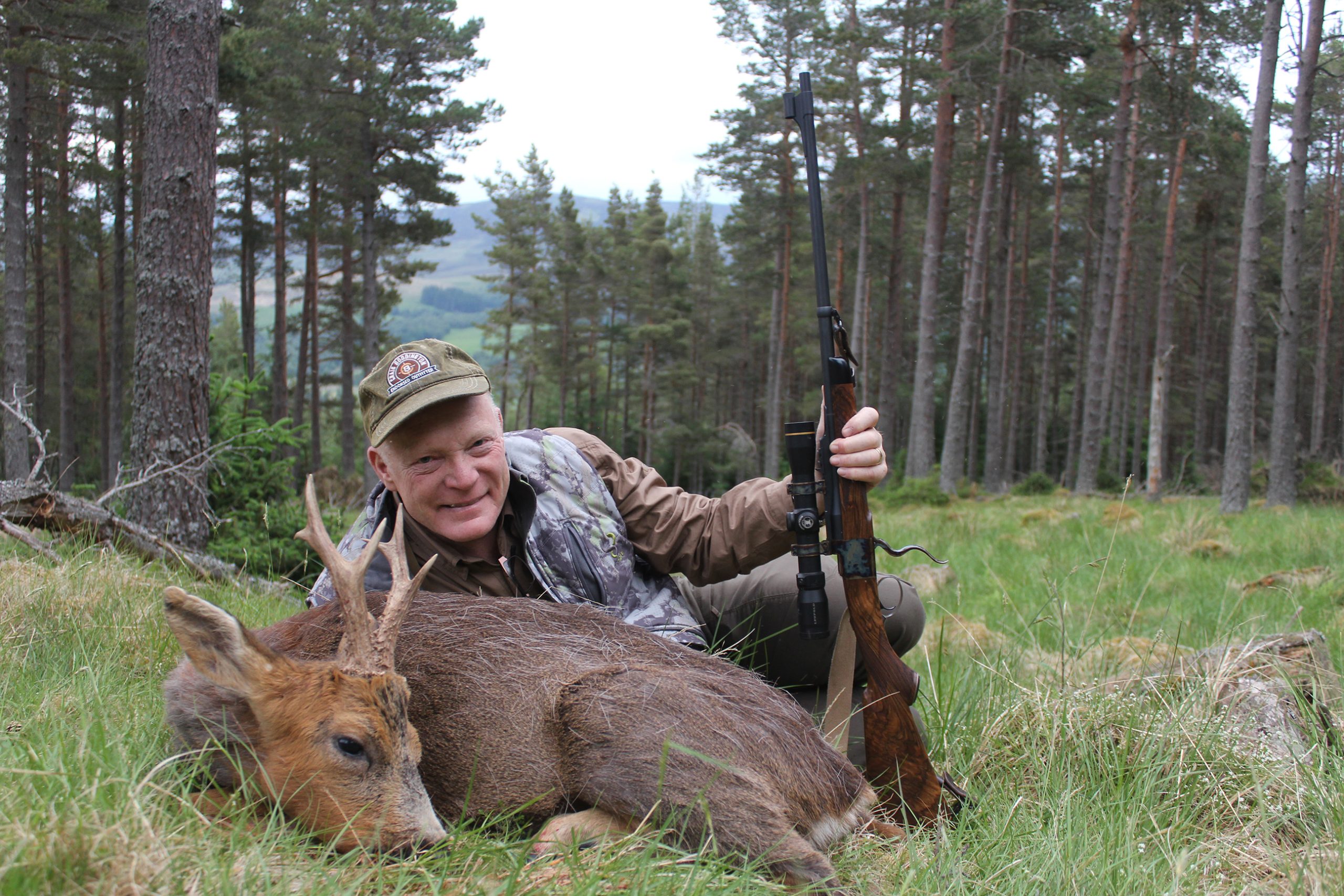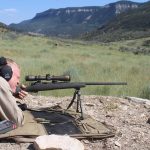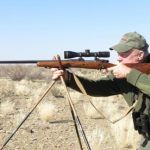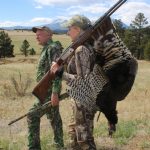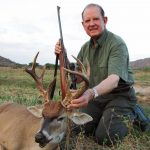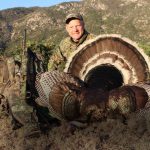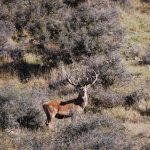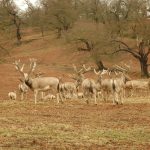Early in the season may be the best time of all to hunt roe deer.
Image above: This is a nice roebuck with typical three-tined antlers, nothing special, just a nice, average roebuck–sort of like a decent 8-point or medium 10-point whitetail.
The world over, most deer are in hard antler in autumn, so deer hunting is generally a fall pursuit. What that means depends on where you are. In the Northern Hemisphere, it’s September, October, and November. In the Southern Hemisphere, with the seasons opposite, March, April, and May are prime time for red and fallow deer. Tropical deer mess this up a bit. At least some axis, hog deer, muntjac, sambar, etc. are in hard antler in any month. Most of North America’s introduced axis deer come into hard antler in the spring, and rut in July.
In its natural state on its native turf, the roe deer of Eurasia are the primary exception. Males are in hard antler in May, and will shed in early November. Most European countries have rigidly set hunting seasons, just like American states, based around sustainable harvest goals. The biggest difference: That harvest goal is achieved by a much smaller hunting public. Bag limits are generally unknown; it doesn’t matter how the quota is divvied up, just so it’s met. And, by our standards, seasons are ridiculously long.
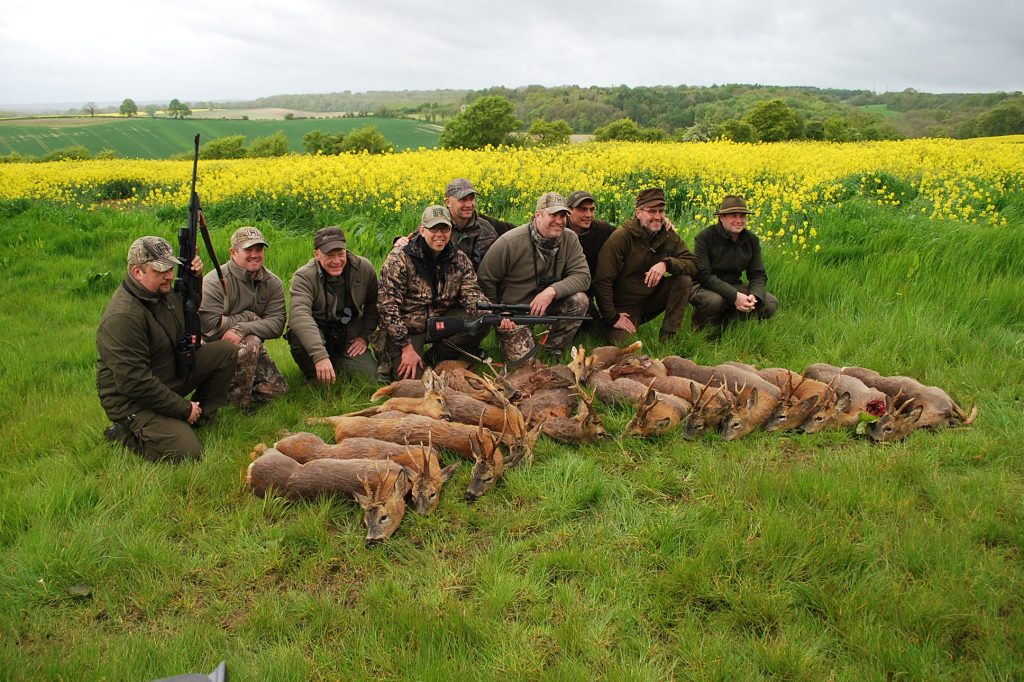
Seasons vary from country to country, but most roebuck seasons start between April 1 and the beginning of May. Typically, they run into or through October, shutting down before the males start to lose their antlers. Because of management goals, some places run later seasons for females only. I did a driven hunt in Germany in November, with roe deer females on the hit list. I’m guessing European hunters in the group, with more experience, could judge sex more readily than I could. I saw several bucks, pedicels obvious and off-limits, but as small, gray deer drifted (or dashed) through, I didn’t have the confidence to even consider a shot. I waited for pigs.
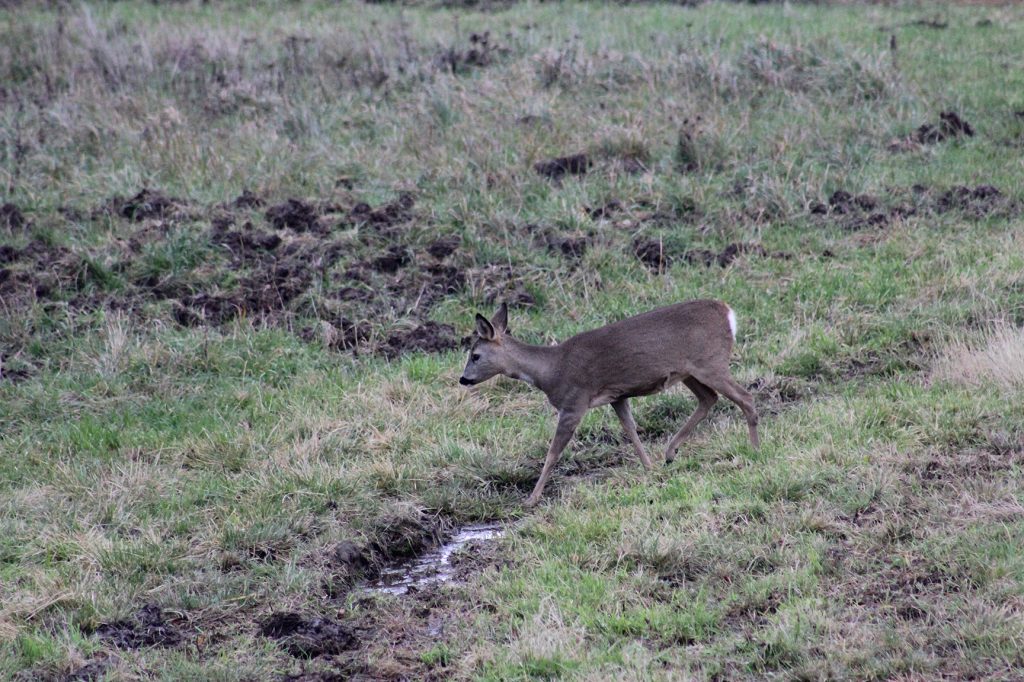
With six- to seven-month seasons, hunting pressure light throughout, and Europe’s intensive wildlife management, there’s really no bad time to hunt roebuck. In Austria, Czech Republic, and Italy, I’ve had good roebuck hunting in September and clear into October. However, with ideal hunting for other game (such as red and fallow deer) taking precedence in the fall, most European hunters feel there are two ideal periods to hunts roebuck: The first few weeks of the season, and during the rut, which is in July.
Roebuck hunting in the rut is a little like whitetail hunting in the rut. Older bucks come of the woodwork searching for females, and that’s when big bucks nobody has ever seen before might wander in. Also, it’s the period when skilled hunters have the most success calling roebuck, which is one of the most exciting ways to hunt almost any game (when it works).
Given a choice, I prefer to hunt early. In part, this is because of my North American roots: We tend to be overly focused on the criticality of Opening Day: we feel we must get in there while the game is undisturbed and strike before the orange-clad hordes stink up the woods. The latter doesn’t happen in Europe, but the undisturbed aspect is valid everywhere. With roebuck in spring, there are other advantages. After the long winter, things are greening up, and deer are coming out of the thick stuff and feeding on succulent new growth.
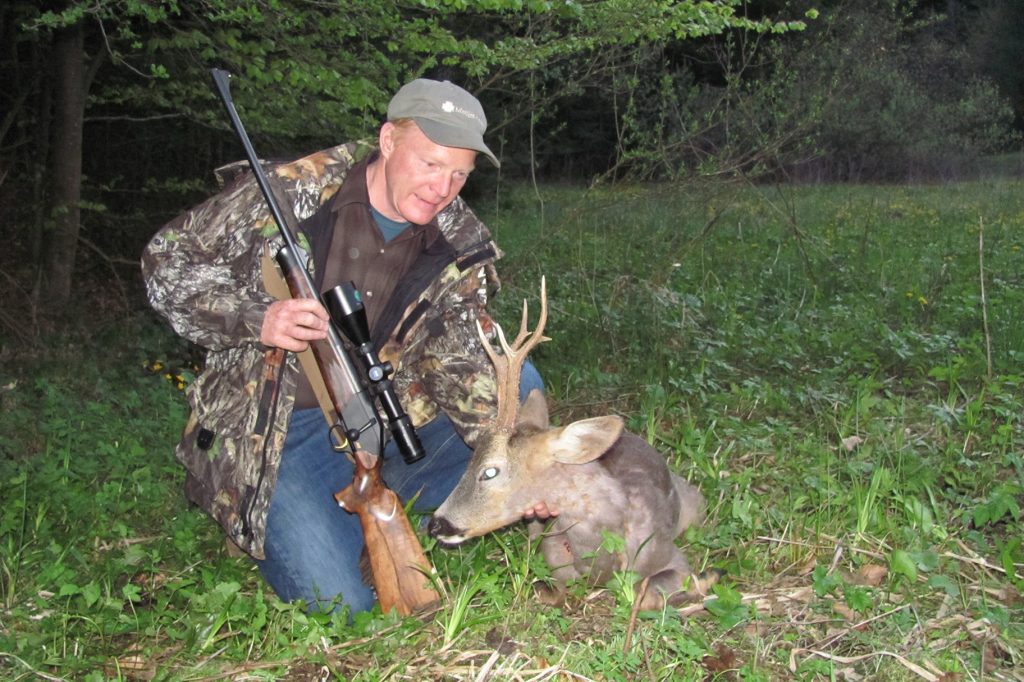
Also, and perhaps more important, spring is a wonderful time to be in the woods. Weather is still cool and crisp, wildflowers are everywhere, mushrooms are popping. In North America, we see this with spring turkey hunting, sometimes with black bear, but we don’t get to savor the long, soft days of spring and early summer while deer hunting.
The roebuck, Capreolus capreolus, is a small-bodied deer, large bucks weighing up to perhaps 75 pounds, with short three-tined antlers. Taxonomy places them in the same sub-family as the North American deer of genus Odocoileus, and indeed they have many parallels with our white-tailed deer. They are browsers, bedding in cover and thriving in edge habitat. I like to describe them as “Europe’s whitetail,” widespread and popular.
There are major differences: We have dozens of whitetail races and subspecies. Continent-wide, from the British Isles to eastern Turkey and Iran, there is just one European roe deer. Some biologists separate the isolated populations in Italy and Spain as unique subspecies. Not all agree, and hunters’ record-keeping systems recognize just one European roebuck. The only other roebuck is the Siberian roebuck (C. pygargus), found in varying densities from Kazakhstan to Korea. The Siberian roebuck is much larger, big males up to 130 pounds, similar antlers but longer and taller. I took my one and only Siberian roebuck in the forests of northern Mongolia twenty years ago; otherwise, I know little about them.
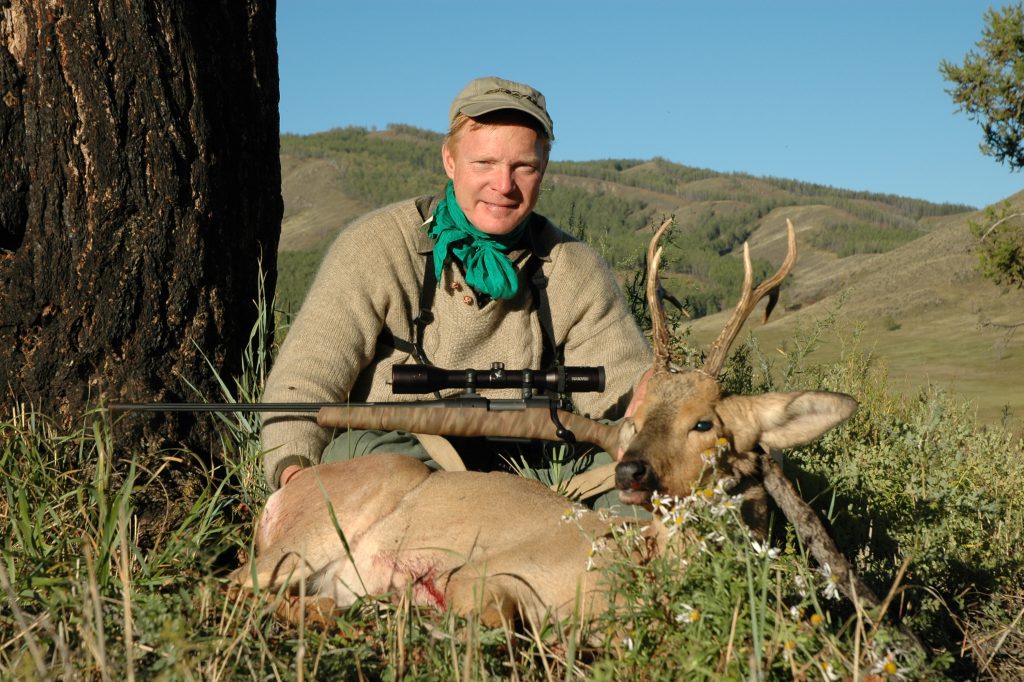
In recent years I’ve often been asked, “are roe deer found in Texas?” Or anywhere outside of Europe? Well, you can find almost any living creature on one or another Texas ranch. Vague references suggest roe deer have existed in Texas since the 1930s. I don’t doubt it, but I have never been on a ranch that boasted a breeding population. While European red deer have been widely introduced in the Western Hemisphere and South Pacific, this has not been the case with roe deer. You want to hunt roe deer, you need to go to Europe.
This is not a problem. Top to bottom, east to west, Europe offers a lot of opportunity to hunt roebuck. European hunters are accustomed to pay-as-you-go hunting. They love their roebucks, and costs are high for “medal class” trophies. Not so much for nice, representative specimens. Interestingly, to Europeans, roebuck quality is typically judged by mass and pearling at the base, per their CIC system. American hunters are more immersed in systems that place more emphasis on beam and tine length. So, what you or I find impressive, and might consider spectacular because of height and tine length, might not even make bronze by European standards.
Costs vary by country, but much roebuck hunting is wonderfully affordable. Since almost all hunting in Europe is considered a harvest—with a necessary quota—it’s commonplace to have the opportunity to take multiple bucks.
With their wide range, big roebucks are where you find them, like whitetails. Also like whitetails, some areas are known for producing bigger antlers. At the far north of their range, Sweden produces exceptional roebuck. So does Eastern Europe, perhaps especially the rich farmlands of the Danube Valley. My best buck was taken on a wonderful May hunt in Hungary, during gorgeous weather, a couple of roebucks in virtually every field. I took another exceptionally long-antlered buck in Romania, at the very start of the season. Not historically known for big roebuck, Spain has produced some dandies in recent years.
The only catch: As with whitetails, costs are likely to be higher in areas known for exceptional antler quality. I think some of my most enjoyable roebuck hunting has been in England and Scotland. There are big bucks in both places. Jason Hornady got a big one in southwestern England on a May 2014 hunt, by far the largest among a score of bucks taken by our group. Realistically, however, exceptional bucks are few and far between in the UK. That’s just fine. It’s a harvest, with the venison all spoken for. Wonderfully inexpensive, lots of bucks, take ’em as they come. No pressure, just plain fun.
Anywhere, some hunting may be done from stands (often just like whitetail stands), but almost all of my roebucks have been taken by spot-and-stalk, working around the edges of agriculture. It’s always an enjoyable way to hunt, but especially pleasant in mild spring and early summer weather. The fields are turning emerald green, and there are often wildflowers everywhere. You won’t take a buck on every stalk, or on every morning or afternoon outing. It’s not unusual to average 50 percent. In the fall, I love whitetails. In the spring, it’s hard to beat stalking roebuck.
